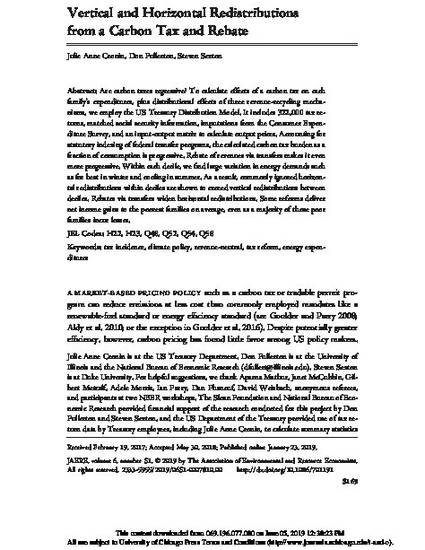
Article
Vertical and Horizontal Redistributions from a Carbon Tax and Rebate
Journal of the Association of Environmental and Resource Economists
(2019)
Abstract
Are carbon taxes regressive? To calculate effects of a carbon tax on each family’s expenditures, plus distributional effects of three revenue-recycling mechanisms, we employ the U.S. Treasury Distribution Model. It includes 322,000 tax returns, matched social security information, imputations from the Consumer Expenditure Survey, and an input-output matrix to calculate output prices. Accounting for statutory indexing of federal transfer programs, the calculated carbon tax burden as a fraction of consumption is progressive. Rebate of revenues via transfers makes it even more progressive. Within each decile, we find large variation in energy demands such as for heat in winter and cooling in summer. As a result, commonly ignored horizontal redistributions within deciles are shown to exceed vertical redistributions between deciles. Rebates via transfers widen horizontal redistributions. Some reforms deliver net income gains to the poorest families on average, even as a majority of those poor families incur losses.
Keywords
- incidence,
- climate policy,
- revenue-neutral reform,
- distributional effects
Disciplines
Publication Date
March, 2019
Citation Information
Julie-Anne Cronin, Don Fullerton and Steven Sexton. "Vertical and Horizontal Redistributions from a Carbon Tax and Rebate" Journal of the Association of Environmental and Resource Economists (2019) Available at: http://works.bepress.com/don_fullerton/79/
